Tilicho Lake is one of the highest lakes located in the Annapurna range of the Himalayas standing at 4,919 meters. Its serene waters reflect the snow-capped peaks surrounding it, making it a mesmerizing sight. Nestled in the rugged terrain of the Himalayas, this lake is a testament to nature’s grandeur and power.
Trekkers can experience the beauty of the Himalayan landscape through rocky trails and lush forests. For those seeking adventure and solitude, it offers a sanctuary to reconnect with nature. Its beauty transcends words and continues to enchant and inspire visitors.
Geographic Location And Formation Of Tilicho Lake
It is located in Nepal’s Manang district, and is a stunning natural wonder. It’s formed by glacial meltwater from the surrounding mountains, with Tilicho Peak at an elevation of 7,134 meters.
The lake’s unique geographical setting is surrounded by towering peaks and rugged terrain, making it a popular destination for trekkers and adventurers. It offers breathtaking views. The lake’s location and formation are linked to the natural processes that shape the Himalayan region making it a must-see for nature lovers.
Importance Of Tilicho Lake
Tilicho Lake is a sacred site in Nepal’s Himalayas which is also a symbol of spiritual connection. It is deeply ingrained in indigenous communities’ traditions and is a vital source of freshwater, nourishing the region’s ecosystem.
The lake’s existence is crucial for local communities’ livelihoods and economic activities. Preserving Tilicho Lake is vital for its cultural and spiritual significance and efforts to conserve and protect it must involve local stakeholders, government authorities, and environmental organizations.
Trekking To Tilicho Lake
Trekking to Tilicho Lake presents an exhilarating adventure that combines challenges with unparalleled natural beauty. It also offer travelers an unforgettable journey through diverse landscapes.
Exploring The Routes And Difficulty Of Tilicho Lake
Beginning on the trek to Tilicho Lake reveals a network of routes with the most frequented starting point being the town of BesiSahar. From there the trail strolls through enchanting villages like Chame and Manang each offering glimpses into the local culture and way of life.
However, this trek is not for the faint-hearted. It involves navigating steep trails and conquering high mountain passes, which demand endurance and experience from trekkers. The rugged terrain presents challenges, but the journey is ultimately rewarding for those who dare to embark upon it.
Which Is The Best Time To Visit There?
Choosing the best time to visit Tilicho Lake is crucial for a fulfilling experience. The spring and autumn seasons, spanning from March to May and September to November, respectively, offer the most favorable conditions for trekking. During these months, the weather is relatively stable, with clear skies and pleasant temperatures that enhance the breathtaking views of the surrounding landscapes.
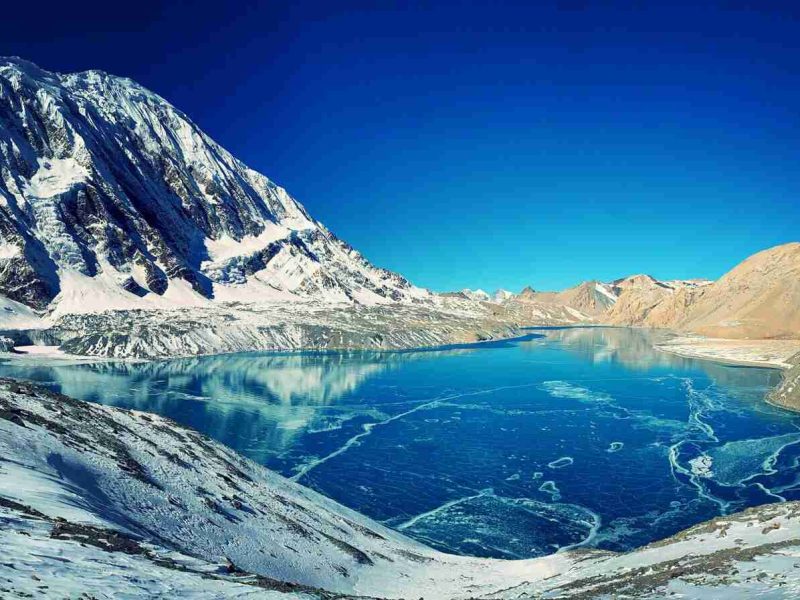
In addition, travelers should steer clear of the monsoon season occurring from June to August. When heavy rainfall increases the risk of landslides and disrupts trekking routes. Starting on a trek to this lake during the optimal seasons ensures not only safety but also an immersive experience of the Himalayas. From lush forests to alpine meadows and rugged mountain terrain, every step of the journey unveils a new facet of nature’s grandeur, leaving trekkers with memories to cherish for a lifetime.
Accommodation And Facilities During Tilicho Lake Trek
During the trek to Tilicho Lake, travelers are greeted with a network of tea houses and guesthouses strategically positioned along the route, offering respite and comfort amidst the wilderness.
Tea Houses And Guest Houses
Along the trekking route to Tilicho Lake, travelers will encounter a variety of tea houses and guesthouses nestled amidst the scenic landscapes. These establishments provide weary trekkers with a warm and welcoming atmosphere, offering a range of accommodation options to suit different preferences and budgets.
Basic Amenities
Despite their remote locations, tea houses and guesthouses along the route to Tilicho Lake are equipped with essential amenities to ensure a comfortable stay for travelers. These amenities typically include:
- Food: Guests can indulge in hearty meals prepared with locally sourced ingredients, providing nourishment and energy for the journey ahead. Traditional Nepali dishes, as well as international cuisine, are often available to cater to diverse tastes.
- Lodging: Accommodation options vary from cozy dormitories to private rooms, allowing travelers to choose according to their preferences and budget. Beds are furnished with warm blankets and clean bedding, ensuring a restful night’s sleep amidst the crisp mountain air.
- Hot Showers: After a day of trekking through rugged terrain, weary travelers can rejuvenate themselves with hot showers available at tea houses and guesthouses along the route. The opportunity to wash away the dust and fatigue is a welcome luxury amidst the wilderness.
Flora And Fauna Around Tilicho Lake
Tilicho Lake’s surrounding area is home to a diverse ecosystem of flora and fauna, adapted to the harsh mountain environment. The landscape is adorned with alpine vegetation, including rhododendrons and juniper trees, which provide shelter and stabilize the soil.
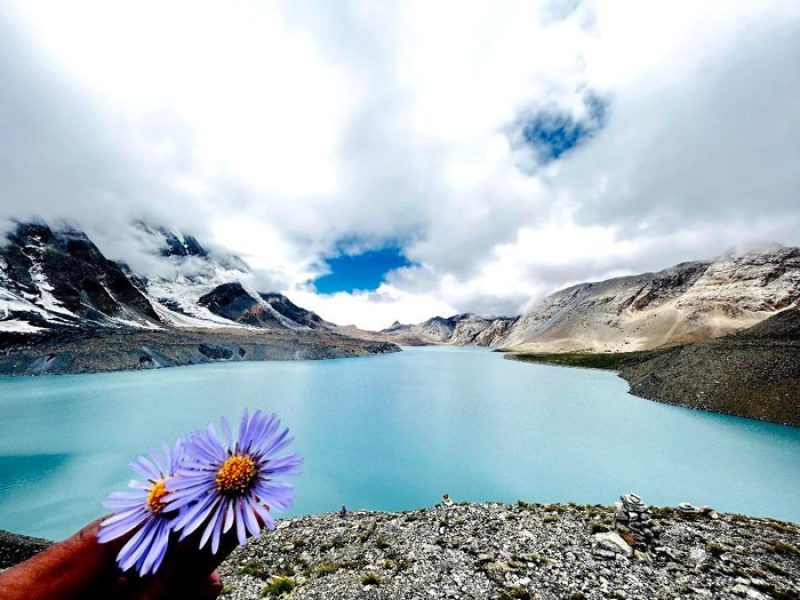
The area is also home to elusive wildlife, such as snow leopards and blue sheep, which are adapted to the high-altitude environment. The region is a biodiversity hotspot, supporting a wide range of plant and animal species adapted to the high-altitude environment. Visitors can witness the resilience and beauty of the flora and fauna that call Tilicho Lake and its surrounding area home.
Challenges And Conservation Efforts Regarding Tilicho Lake
Despite its remote location, it faces challenges from climate change, unsustainable tourism practices, and waste management issues. Climate change, including rising temperatures, changing precipitation patterns and retreating glaciers threatens the lake’s delicate ecosystem.
Unsustainable tourism practices such as soil erosion and habitat destruction can also degrade the natural landscape. Additionally, the inflow of tourists can generate non-biodegradable waste, posing a threat to wildlife and the lake’s pristine beauty. Conservation efforts by local communities and organizations aim to address these challenges.
Local Myths And Legends Regarding Tilicho Lake
Tilicho Lake is believed to be guarded by ancient deities and spirits. These mystical tales and legends have been passed down through generations, shaping the spiritual beliefs and cultural identity of the indigenous communities.
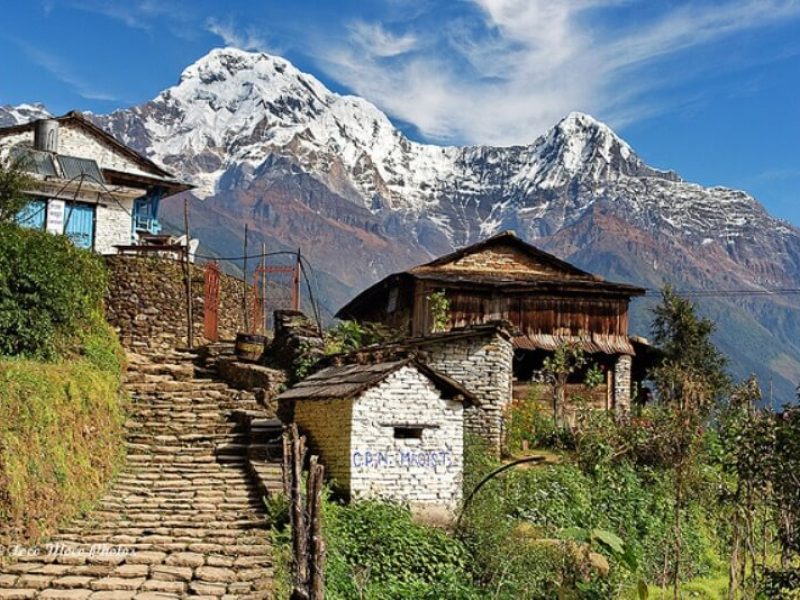
Photography Opportunities In Tilicho Lake
Tilicho Lake is a photographer’s paradise, offering stunning landscapes, majestic mountain vistas, and captivating wildlife encounters. The serene waters of the lake and the rugged peaks of the Himalayas provide endless opportunities for photography. The stunning landscapes, with dramatic contrasts and vibrant colors, captivate the eye.
The Himalayan range offers panoramic shots and close-up details, showcasing the majestic beauty of these ancient mountains. The lake and its surrounding wilderness are home to a diverse array of wildlife species, each adapted to thrive in the harsh mountain environment.
The ever-changing light and weather conditions also add a dynamic quality to photographic compositions. This lake is a photographer’s dream destination, offering endless opportunities to capture the awe-inspiring majesty of nature.
Attractions Near Tilicho Lake
The surrounding region of Tilicho Lake offers a variety of attractions for travelers to explore the rich cultural heritage and natural wonders of the Himalayas. The Annapurna Circuit, a renowned trekking route offers breathtaking views of snow-capped peaks, cascading waterfalls, and terraced fields.
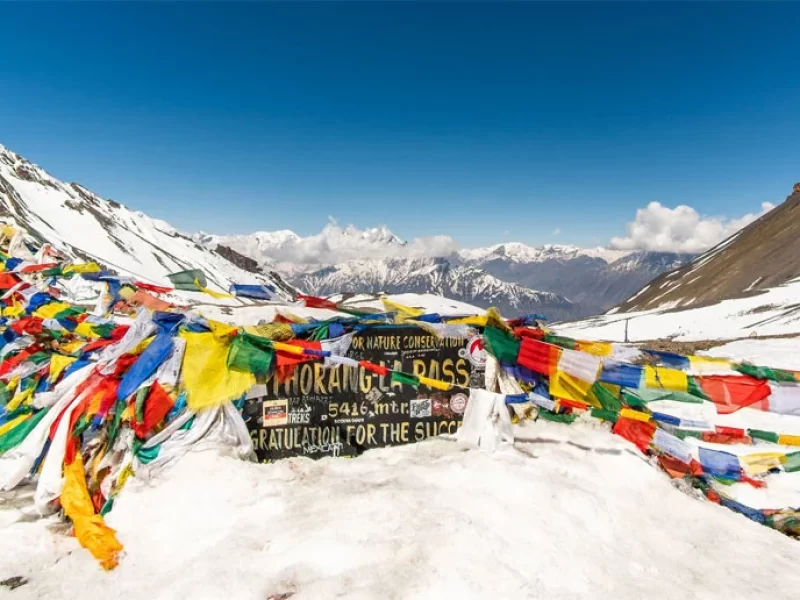
Thorong La Pass located at 5,416 meters, is a highlight for trekkers seeking a challenge and a sense of accomplishment. The villages of Manang and Pisang, nestled amidst the Annapurna range, offer a glimpse into traditional Himalayan life with distinctive architecture, vibrant culture, and warm hospitality.
Safety Tips For Visitors Who Are Visiting The Tilicho Lake
For visitors starting on the trek to Tilicho Lake, ensuring safety is paramount to a successful and enjoyable journey. Here are some essential safety tips to consider before setting out on this adventure:
1.Accomodate Properly
Prioritize proper accomodation by allowing your body time to adjust to the high altitude. Climb gradually and take frequent rest breaks to avoid altitude sickness and related complications.
2.Stay Hydrated
Hydration is key to combating the effects of altitude and staying healthy throughout the trek. Drink plenty of water and fluids regularly to prevent dehydration, especially in the dry mountain air.
3.Follow Experienced Guides
It’s essential to follow the guidance of experienced guides and porters who are familiar with the terrain and weather conditions of the region. Their expertise can help navigate challenging trails and ensure a safe journey to Tilicho Lake.
4.Be Prepared For Weather Changes
Weather conditions in the Himalayas can be unpredictable, ranging from sunny skies to sudden snowstorms. Be prepared for changing weather by packing adequate gear, including waterproof clothing, warm layers, and sturdy footwear.
5.Respect Local Customs and Wildlife
Show respect for the local culture and wildlife by following established guidelines and regulations. Avoid disturbing wildlife, leave no trace of your presence, and be mindful of cultural sensitivities when interacting with local communities.
6.Stay Informed
Stay informed about trail conditions, weather forecasts, and any potential hazards along the route. Check with local authorities or trekking agencies for updated information before setting out on your journey.
By prioritizing safety and taking necessary precautions, visitors can enjoy a memorable and rewarding trek to this lake. Remember to stay vigilant, listen to your body and respect the natural environment to make the most of this unforgettable adventure in the heart of the Himalayas.
Weather Condition Of Tilicho Lake
Tilicho Lake’s weather is unpredictable, with seasonal variations and altitude effects. Spring and autumn seasons offer mild temperatures and clear skies, while the monsoon season brings heavy rainfall and increased humidity.
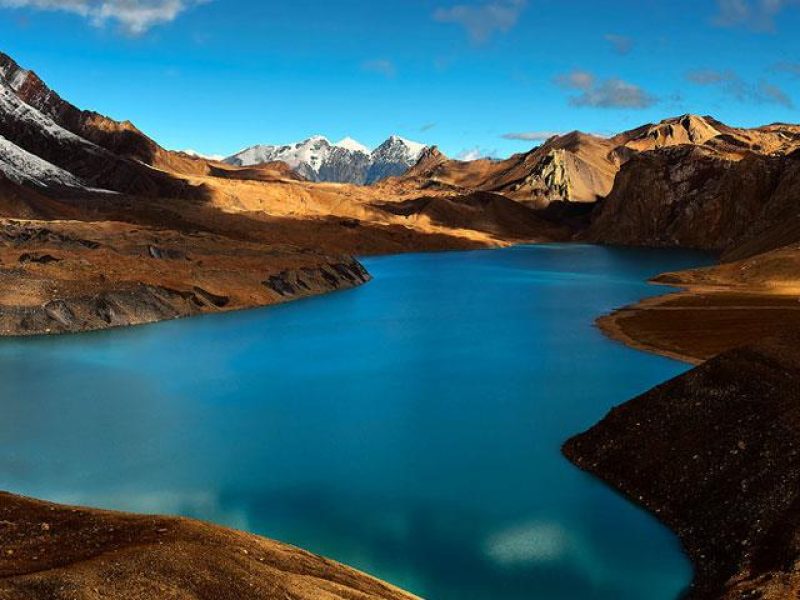
Winter months bring colder temperatures and occasional snowfall, but travelers should be prepared for freezing temperatures and icy conditions. Altitude also influences weather, with sudden changes in weather common at higher altitudes.
To navigate these unpredictable conditions, travelers should bring appropriate clothing layers, waterproof gear, and stay informed about weather forecasts and trail conditions. Experienced guides and porters can provide valuable insights into local weather patterns and potential hazards.
Sustainable Tourism Practices On Tilicho Lake
To preserve Tilicho Lake and its environment, visitors should adopt sustainable tourism practices. These include reducing waste by using reusable items, respecting wildlife, leaving no trace, conserving water and energy and educating others about the importance of environmental protection.
Support local businesses and choose eco-friendly accommodations. Stay on designated trails and camp only in designated areas to reduce soil erosion and habitat disturbance. Share your commitment to sustainable tourism with fellow travelers and communities, and participate in conservation initiatives to preserve
Tilicho Lake and promote responsible travel practices. By incorporating these practices into your visit, you can contribute to the long-term preservation of this natural wonder for future generations.
Conclusion
In conclusion, Tilicho Lake is one of the highest lakes in the world with a breathtaking natural wonder. Trek Me Nepal a travel company, is committed to preserving and protecting it for future generations. They support local communities, respect wildlife, and promote conservation efforts. The company aims to inspire travelers with breathtaking landscapes, cultural heritage, and wonder at the natural world.
Frequently Asked Questions (FAQs)
1.How do I get to Tilicho Lake?
You an reach to Tilivho lake by the most common route beginning from the town of Besi Sahar and traversing through picturesque villages like Chame and Manang before reaching the lake.
2.What is the best time to visit Tilicho Lake?
The best time to visit Tilicho Lake is during the spring (March to May) and autumn (September to November) seasons when the weather is relatively stable, and the views are breathtaking. It’s essential to avoid the monsoon season (June to August) due to heavy rainfall and potential landslides.
3.Is it possible to camp near Tilicho Lake?
Yes, camping near Tilicho Lake is possible. However, it’s essential to follow Leave No Trace principles and obtain necessary permits if required.
4.Are there any altitude-related risks when trekking to Tilicho Lake?
Yes, travelers may experience symptoms of altitude sickness, such as headache, nausea, and fatigue. It’s crucial to acclimatize properly, stay hydrated, and descend if symptoms worsen.
5.What are some safety precautions to take while trekking to Tilicho Lake?
The safety precautions to take while trekking to this lake is by acclimatizing, staying hydrating, listening to guides, packing essentials, and staying ready for weather changes.

Comment (0)